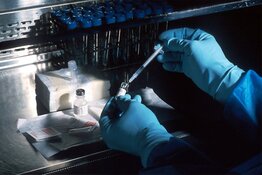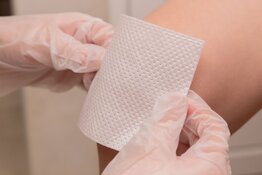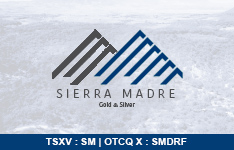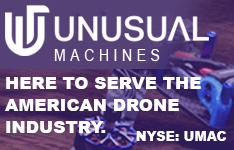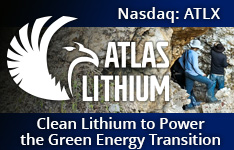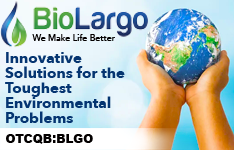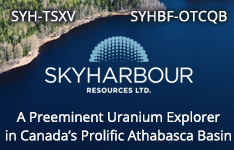PreveCeutical Preventive Health Sciences (PREV:CSE; PRVCF:OTC; 18H:FSE), a health sciences company developing novel preventive and curative therapies, is actively executing a spin-out strategy designed to unlock value for shareholders. In a recent interview with Streetwise Reports, CEO Stephen Van Deventer discussed the company’s roadmap, beginning with the spin-out of Biogene, which has acquired PreveCeutical’s diabetes and obesity assets in exchange for 16 million Biogene shares.
PreveCeutical plans to distribute a majority of those shares as a dividend to its shareholders following the upcoming annual general meeting (AGM). The company expects the Biogene spin-out to be completed and trading publicly by the end of the year. A second spin-out is already in development, focused on non-addictive analgesic peptide assets under the entity “Biopain.” According to Van Deventer, that transaction is targeted for the third quarter, with a public listing anticipated by mid-2026.
These transactions aim to provide direct exposure to targeted therapeutic markets through independently specialized entities. “Each company is going to become specialized in those fields,” said Van Deventer, noting that Biogene includes a dedicated team of gene therapy specialists, while Biopain will be supported by pain management experts.
During the call, the CEO emphasized the shareholder benefit of the spin-out strategy, stating, “Biogene issued 16 million shares to PreveCeutical in exchange for the assets. PreveCeutical will now dividend a majority of those shares to the shareholders at the next AGM.” He confirmed that the transaction is expected to be finalized soon, noting, “Biogene should be funded in the next 30 to 60 days… probably public by the end of the year.”
Van Deventer also outlined the broader vision for PreveCeutical’s evolving corporate structure. “Once I’ve started that spin-out, that public transaction, I’ll be working on the spin-out [of Biopain]. So probably Q3, we’ll be spinning out the pain asset… That’ll probably be public by the middle of next year.” He highlighted that each spin-out will be tailored with its own domain expertise, explaining, “When I spun Biogene out, I brought in gene specialists. When I spin out Biopain, I’m going to be bringing in pain specialists. So now each company is going to become specialized in those fields.”
Van Deventer positioned the company’s current stage as pivotal, stating, “This year is going to be more formative for PreveCeutical. Ten years have been a lot of R&D and money spent... Now we’re actually going into the proof of concept.” He described the gene therapy delivery technology as especially significant, adding, “We’re now in the proof-of-concept stage proving that we can deliver these siRNAs without a virus and with much more efficacy and much more cargo, meaning that we can get high efficacy.”
The spin-outs align with PreveCeutical’s broader platform-based model, which leverages three core technologies: Sol-gel nasal delivery, Nature Identical peptide synthesis via proprietary linker technology, and bioresponsive lipid nanoparticles (BLNPs) for non-viral gene therapy delivery. The company is currently pursuing proof-of-concept studies, with key data from rodent studies expected by early 2026. These findings could demonstrate gene-targeting efficacy - a milestone Van Deventer explained, “nobody on the planet has been able to do yet.”
PreveCeutical’s approach appears to be attracting attention. According to Van Deventer, institutional interest is building, including exploratory conversations with firms like Goldman Sachs and J.P. Morgan, who have expressed potential interest in investing up to US$80 million contingent on successful preclinical results.
Biotechnology and Health Sciences Sector
The biopharmaceutical industry remained a key driver of economic and technological growth in 2025, bolstered by innovation in gene therapy, drug delivery platforms, and investment in R&D-intensive projects. According to Andrew Powaleny in an April 30 statement for NDP Analytics, the biopharmaceutical industry contributed more wages, exports, output, and GDP per employee from 2012 to 2022 than the average of all other U.S. manufacturing industries. The report noted that "intellectual property (IP) is foundational to a productive modern economy and a crucial factor in sustaining American competitiveness," particularly for high-risk, high-reward fields such as biopharmaceutical development. Investments in patent-protected innovation were shown to correlate with significantly higher economic output.
A report from Medi-Tech Insights published in Charles River News earlier in the year found that the global biopharmaceutical market was projected to grow at a rate of 12% over the next five years. While concerns over legislation like the U.S. BIOSECURE Act had introduced some market uncertainty, the sector continued to benefit from increased R&D investment, growth in biosimilar development, and demand for advanced therapies. The report highlighted that demand was largely driven by the rise of chronic health conditions such as cancer, diabetes, and cardiovascular disease. It stated that “key factors driving the [biopharmaceutical market include] innovations in biotechnology, the expansion of biosimilar medicines and increasing investment in research and development.”
In addition to therapeutic innovation, regulatory strategy played a growing role in shaping the sector. A June 5 report from Research and Markets noted that the global regulatory affairs outsourcing market, valued at US$6.84 billion in 2024, was expected to reach US$11.94 billion by 2030. This growth was attributed to the increased complexity of international compliance standards and a higher volume of clinical trial applications. The report stated that “globalization of biopharmaceutical and medical device companies” was a key driver of outsourcing, especially in emerging regions where operational costs are lower and regulatory environments are favorable. It also identified cybersecurity risks and data privacy as ongoing challenges due to the increased use of digital regulatory platforms.
Independent Analyst Highlights Technical Strength and Asset Strategy
On May 27, technical analyst Clive Maund rated PreveCeutical Medical Inc. a "Strong Buy" and suggested the company was poised for a significant technical breakout. He identified what he described as a “giant ‘Pipe’ base” pattern on the long-term chart and noted that the stock price was nearing a key resistance point at CA$0.04. According to Maund, a sustained move above this level would signal a potential entry into a “major new bull market,” particularly given that the price had been consolidating within a narrow range since early 2021.
Maund highlighted the company’s diverse R&D portfolio and emphasized that the potential spin-out of assets into standalone public entities could serve as a catalyst. He referenced the November 15 closing of the Biogene Therapeutics transaction and the planned distribution of “consideration shares” to shareholders as one such example. Additionally, he noted the May 22 closing of an upsized private placement as another positive milestone.
PreveCeutical’s portfolio of proprietary delivery platforms also received attention. Maund wrote that the company’s nasal Sol-gel technology “is much more efficient than oral ingestion,” allowing for the same therapeutic effect at a reduced dosage and lower production cost. He further observed that PreveCeutical holds an “impressive list of patents and licensing agreements,” which he believed added measurable value to the business.
In his assessment, Maund set an initial price target of CA$0.09 to CA$0.10, with a secondary target of CA$0.40, stating that “higher targets [were] possible.” He concluded that PreveCeutical was “rated a Strong Buy here for all time horizons,” citing the alignment of technical indicators and ongoing corporate developments as favorable conditions for potential appreciation.
Platform Potential and Upcoming Catalysts
PreveCeutical is entering what CEO Stephen Van Deventer described as a “formative” phase after ten years of research and development. A major near-term catalyst is the public listing of Biogene, which holds PreveCeutical’s diabetes and obesity assets. The company anticipates closing funding and commencing public trading by the end of the year, with a majority of Biogene shares to be distributed as a dividend to PreveCeutical shareholders following the next AGM. A second spin-out, Biopain, focused on non-addictive analgesic peptides, is also in motion and is expected to be public by mid-2026. These spin-outs are part of a strategy to monetize PreveCeutical’s pipeline by creating specialized entities around each therapeutic vertical, offering shareholders potential exposure to multiple standalone assets.
Simultaneously, the company is pursuing key proof-of-concept studies that could validate its core technologies and enhance its credibility with potential partners and institutional investors. Among these, rodent studies for its gene therapy delivery platform are expected to conclude by early 2026. These studies aim to demonstrate successful delivery of gene-silencing siRNA sequences via PreveCeutical’s proprietary BLNP (bioresponsive lipid nanoparticle) system, potentially establishing a non-viral alternative for gene therapy applications. In addition, results from the Sol-gel program related to dopamine stabilization in Parkinson’s disease are anticipated within the next 60 days, offering another near-term data point.
The company’s positioning is supported by a portfolio of enabling technologies that could appeal to pharmaceutical partners. As stated in the corporate presentation, the Sol-gel platform enables precise, sustained drug delivery to the brain through intranasal administration, potentially improving treatment outcomes while minimizing systemic side effects. The linker technology allows for the synthesis of nature-identical peptides with three-dimensional structures, and the BLNP system offers a scalable, off-the-shelf alternative to traditional viral gene therapy vectors. If upcoming proof-of-concept data supports the efficacy and safety of these platforms, PreveCeutical may be well positioned to enter co-development or licensing discussions, particularly as it expands into verticals beyond metabolic and pain-related conditions.
Important Disclosures:
1) James Guttman wrote this article for Streetwise Reports LLC and provides services to Streetwise Reports as an employee.
2) This article does not constitute investment advice and is not a solicitation for any investment. Streetwise Reports does not render general or specific investment advice and the information on Streetwise Reports should not be considered a recommendation to buy or sell any security. Each reader is encouraged to consult with his or her personal financial adviser and perform their own comprehensive investment research. By opening this page, each reader accepts and agrees to Streetwise Reports' terms of use and full legal disclaimer. Streetwise Reports does not endorse or recommend the business, products, services or securities of any company.
3) This article does not constitute medical advice. Officers, employees and contributors to Streetwise Reports are not licensed medical professionals. Readers should always contact their healthcare professionals for medical advice.
For additional disclosures, please click here.




